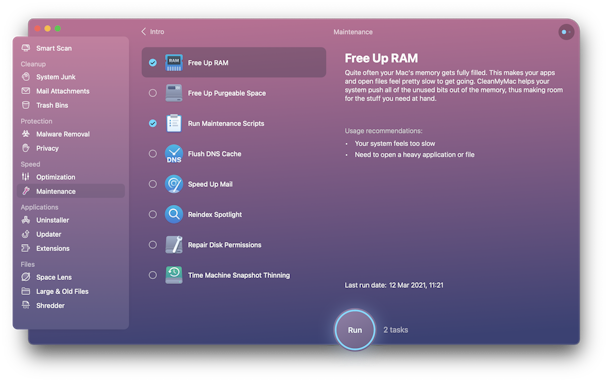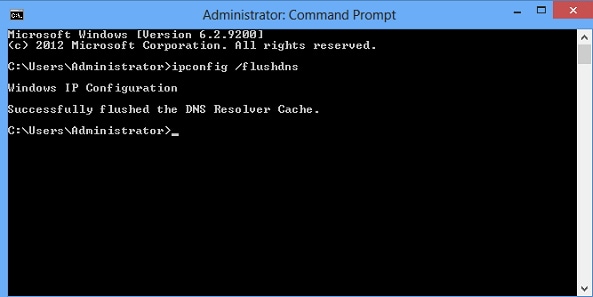HOW TO CLEAR CACHE MEMORY To clear the cache: Press the Ctrl, Shift and Del/ Delete keys on your keyboard at the same time. Select All time or Everything for Time range, make sure Cache or Cached images and files is selected, and then click the Clear data button. SUBSCRIBE HERE - #how #to #clear #ram #cache #memoryHow to clear your Ram cache memory space in this tutorial. Pay very close attentio.
Clear Cache Windows 10
If you are wondering whether the Processor or CPU on your computer is equipped with Cache Memory, you will find below the steps to Check Processor Cache Memory in Windows 10.
Processor Cache Memory in Windows 10
The idea behind providing the Processor with its own Cache Memory is to store the most frequently used information required by the CPU in the Processor Cache.
Since, the most frequently used data is readily available within the Cache, the processor does not have to spend time accessing this information from main memory (RAM) of the computer.
Compared to the main memory (RAM), the Processor Cache provides faster access to information, resulting in faster processing of programs and data on a computer.
- To clear the Windows Store cache, open “Run” by pressing Windows+R on your keyboard. The “Run” window will appear. In the text box next to “Open,” type WSReset.exe and then click “OK.” Once selected, a black window will appear.
- Method 3: Clear App Data File to Clear Memory Cache Step 1: At the first step, you have to click on the 'Start' button or hit on the 'Windows' key and click on 'Computers' to open My Computer. Step 2: My Computer window will appear; if you don't see My Computer, then manually type 'My Computer' in the start and hit the 'Enter' button.
Compared to RAM, Processor Cache Memory is more expensive, which explains the reason for lesser amounts of Processor Cache Memory being used in computers.
Types of Processor Cache Memory Used in Computers
When you check Processor Cache Memory on a computer, you are likely to find the following types of Processor Cache Memories.
- L1 cache: This is the primary cache embedded in the processor chip. This type of Cache is fast, but it offers very limited storage capacity.
- L2 cache: This secondary cache can either be embedded on the processor chip or made available on its own separate chip with a high-speed bus connecting it to the CPU.
- L3 cache: This type of processor cache is designed to serve as a backup for L1 and L2 caches. While L3 Cache is slower compared to L1 and L2 Caches, it is faster than RAM and offers significant boost to the performance of L1, L2 Cache.
While L1 cache is not often made available on computers, you will most likely find Processors of mid and high end computers being equipped with L2 and L3 Cache Memory.
Call of duty advanced warfare for mac free download. You will find below different methods to check Processor Cache Memory on a Windows 10 computer.
1. Check Processor Cache Memory Size Using Task Manager
The Task Manager in Windows 10 provides detailed information about the Processor installed on your computer, including L1, L2, and L3 Processor Cache sizes.
1. Right-click on the Start button and click on Task Manager.
2. On the Task Manager screen, click on the Performance tab > click on CPU in the left pane. Where to download imessage for mac. In the right-pane, you will see L1, L2 and L3 Cache sizes listed under “Virtualization” section.
As you can see in the image above, the CPU in this case has very small L1, L2 and L3 Cache size.
2. Check Processor Cache Memory Size Using Command Prompt
Follow the steps below to find Processor Cache Memory size using the command prompt in Windows 10.
1. Right-click on Start button and click on Command Prompt (Admin) option.

Note: You can also open Command prompt by searching for CMD in Windows 10 search bar.
2. On the Command Prompt screen, type wmic cpu get L2CacheSize, L3CacheSize and press the Enter key on the keyboard of your computer.

3. Once the command is executed, you will find L2, L3 Cache size information displayed on the screen.
3. Check Processor Cache Memory Using Settings

Another way to check Processor Cache Memory is by using the Settings App on your computer.
1. Open Settings and click on the System tab.
2. On the next screen, scroll down and click on About in the left pane. In the right-pane, you will be able to see the Processor Make, Model and Speed.
Once you know the make and model of the processor, you can get information about the processor, including its Cache Memory Size by looking for “Intel Core i5-7200” processor details on Google.
© Provided by Business Insider If clearing your Internet Explorer cache doesn't improve performance, you might need to try a new browser. Oliver Rossi/Getty Images- You can clear the cache in Internet Explorer to improve its performance if you are having loading issues with the browser.
- You can find the cache controls in the 'Internet options' dialog box under the Tools menu in Internet Explorer.
- If you don't absolutely need to use Internet Explorer, you should upgrade to Microsoft Edge, Chrome, or Firefox.
- Visit Business Insider's Tech Reference library for more stories.

If you're having trouble with loading on Internet Explorer on your Windows 10 PC – in particular if certain web pages won't open or if the browser is running very slowly – you might need to clear the cache. In some cases, a large or corrupted cache can slow down the browser and cause rendering problems.
Before you clear your cache, it's important to note that Internet Explorer is an obsolete web browser and is no longer actively supported by Microsoft. Unless you absolutely need to use it, such as for a Line of Business application that does not work on any other web browser, you should migrate to a newer browser, such as Microsoft Edge or another alternative like Chrome or Firefox.

If you need to use Internet Explorer and still want to know how to clear your cache, here's how to do it.
Check out the products mentioned in this article:
Windows 10 (From $139.99 at Best Buy)
How to clear the cache in Internet Explorer
1. Open Internet Explorer.
2. Click the Tools menu in the upper right corner. Depending on your version of the browser, it will either be labeled 'Tools' or will appear as an icon of a gear.
Download autocad 2018 for mac student. 3. In the drop-down menu, choose 'Internet options.'
© Dave Johnson/Business Insider You can find your Internet options in the Tools menu. Dave Johnson/Business Insider4. On the 'General' tab, and in the 'Browsing history' section, click the 'Delete' button.
© Dave Johnson/Business Insider This will take you to a menu where you can decide what to clear from your cache. Dave Johnson/Business InsiderHow To Clear My Ram Cache Windows 10
5. At a minimum, make sure that 'Temporary Internet Files and website files' and 'Cookies and website data' are selected. Also consider clearing the checkbox for 'Preserve Favorites website data.'
6. Then click 'Delete.'
How Do I Clear My Cache
© Dave Johnson/Business Insider Clear as many areas of the browser cache as you can to solve any performance issues with your browser. Dave Johnson/Business Insider7. After a few moments, your cached data will be deleted and you can see if Internet Explorer's performance improves.
How Do I Clear My Ram Cache
Related coverage from Tech Reference:
